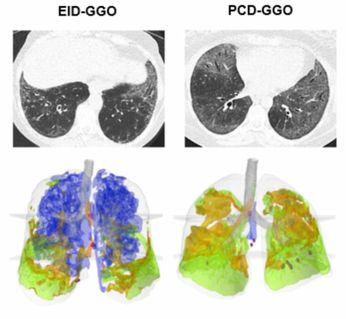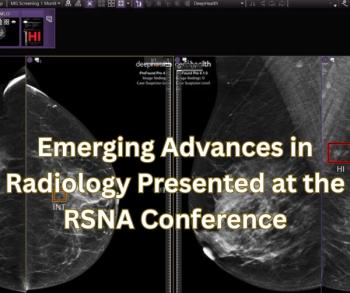
Diagnostic Imaging's Weekly Scan: Nov. 13, 2020
Diagnostic Imaging and Testicular Cancer Risk; Digital Breast Tomosynthesis/Synthetic Mammography Combination for Breast Cancer Screening; Efficacy of Low-Dose CT Lung Cancer Screening; and the Evolving Role of the Radiologic Technologist
Welcome to Diagnostic Imaging’s Weekly Scan. I’m senior editor, Whitney Palmer.
Before we get to our featured interview with Michael Odgren about the evolving role of the radiologic technologist in celebration not only of National Radiologic Technology Week, but also the centennial of the American Society of Radiologic Technologists, here are the top stories of the week.
There’s been a recent push lately to re-think the need for lead shielding during imaging on some patients. But, a study published this week in
For more coverage based on industry expert insights and research, subscribe to the Diagnostic Imaging e-Newsletter
Pivoting to breast cancer, we received more evidence this week that radiologists pick up on more cancers when they use digital breast tomosynthesis with synthetic mammography rather than relying on digital mammography alone. In fact, this combo can detect potentially invasive cancers at an earlier stage. In Radiology, a team of researchers from the Veneto Institute of Oncology in Padua, Italy, examined the outcomes of using digital breast tomosynthesis for screening programs. To do this, they enrolled 34,638 women with an average age of 58 years in their study and had 32,870 of them undergo repeat breast screening – half who had digital breast tomosynthesis and synthetic mammography and half to had only digital mammography. In both rounds of screening, they saw that digital breast tomosynthesis detected a higher proportion of early-stage cancers than digital mammography – 322 to 153 on first screening, and 131 to 59 on second screening. And, the cancer detection rate was 8.1 per 1,000 for re-screening with the combined techniques and only 4.5 per 1,000 for mammography. In addition, for the combo, the proportion of tumors that were stage II and above at re-screening was 14.5 percent, and it was 8.5 percent with mammography by itself. Outside investigators validated the importance of these findings, confirming that they did, indeed, highlight that the improved outcomes from digital breast tomosynthesis extend beyond baseline screening.
And, now, on to lung cancer. Low-dose CT screening has been slow to catch on in the United States with some lack of clarity around whether it works in reducing mortality in high-risk patients. Results from a large study out this week in the
And, finally, this week, Diagnostic Imaging spoke with Michael Odgren, president of the American Society of Radiologic Technologists, about the ever-evolving role of the technologist in practice. Not only did he touch on the biggest issues facing the profession currently, but he also talked about how the pandemic has impacted daily activities, as well as what the profession can anticipate going forward. Here’s what he had to say.
Newsletter
Stay at the forefront of radiology with the Diagnostic Imaging newsletter, delivering the latest news, clinical insights, and imaging advancements for today’s radiologists.




























